Affiliate links on Android Authority may earn us a commission. Learn more.
How to access the clipboard in Windows
It’s impossible to fully use a Windows PC without employing the clipboard, yet most people know very little about it. It also has more capability than many think. There are third-party clipboard managers available for Windows, but they’re completely unnecessary. Windows, since version 10, has had a clipboard manager built right in.
It’s hard to think of a PC-related task — from writing an email, to manipulating images, to editing documents, and even coding — that would not benefit from access to the full function of the Windows clipboard. It even helped me write this article. So read on as we lay out what the clipboard can do, how to gain access to it, and what features it has to make your PC use easier.
Read more: How to access and manage your clipboard on Android
QUICK ANSWER
To access the clipboard in Windows, make sure you have your Clipboard History turned on in your Settings menu. Then hold down the Windows key and hit the V key. A window will pop up with all of the items you have copied to the clipboard since you last started the computer.
JUMP TO KEY SECTIONS
How to enable clipboard history on Windows
First you need to open your Settings menu. If you haven’t pinned it, the icon will be under S in your apps list.
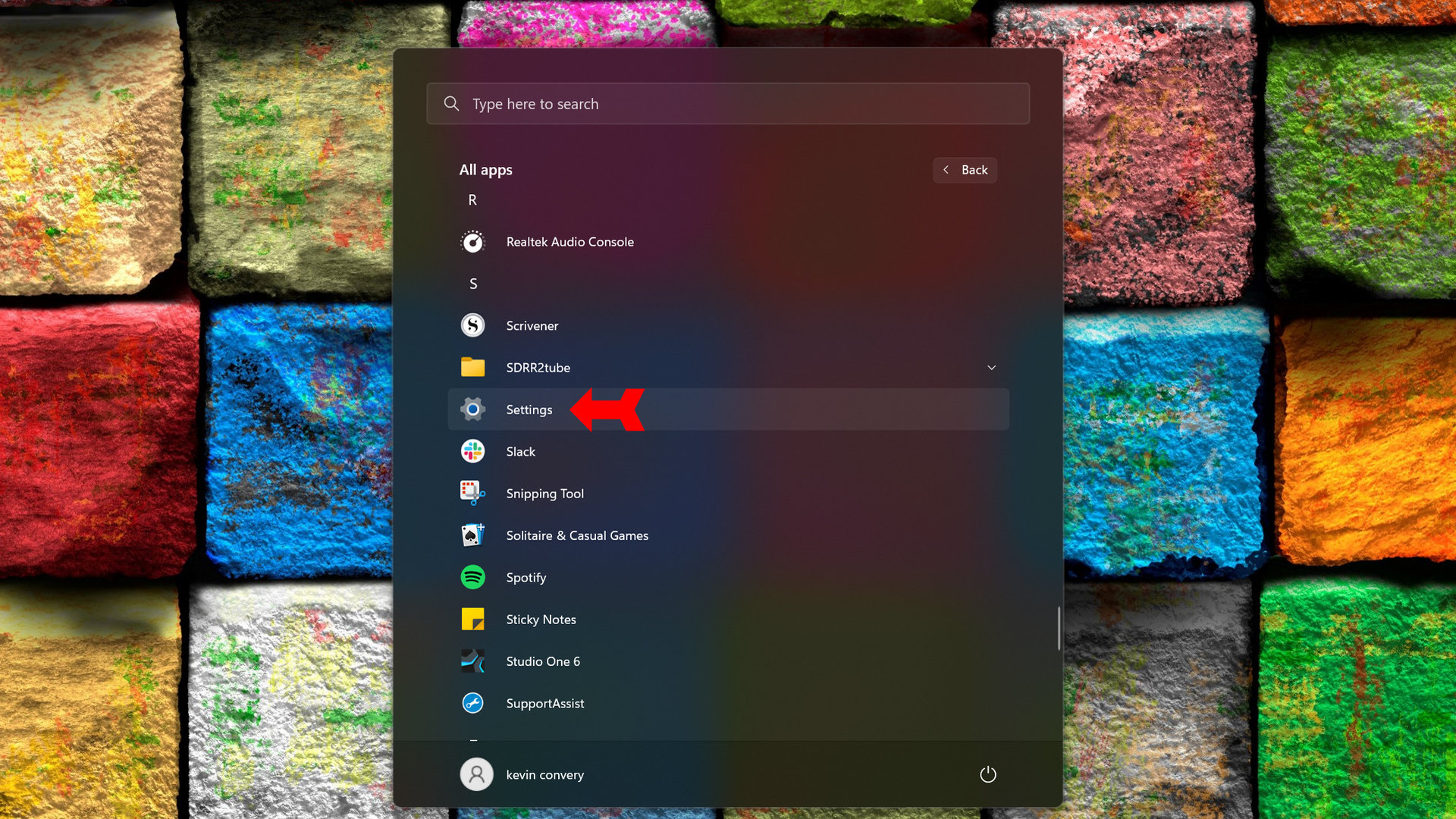
Under the System tab of your Settings menu, select Clipboard.
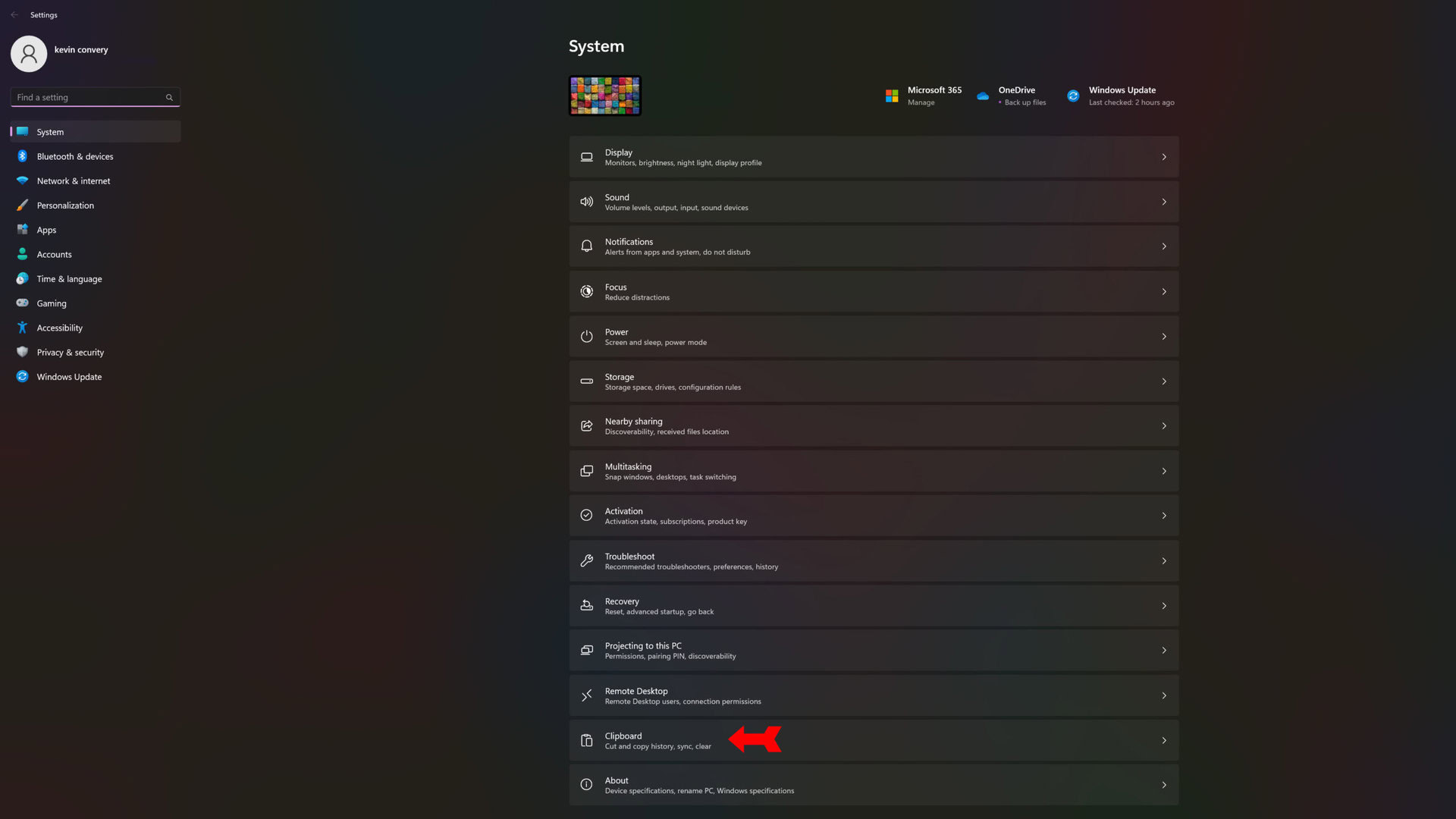
On the Clipboard screen, click on the switch opposite Clipboard history to set it to the On position. Your clipboard history is now active, with slots for up to 25 items.
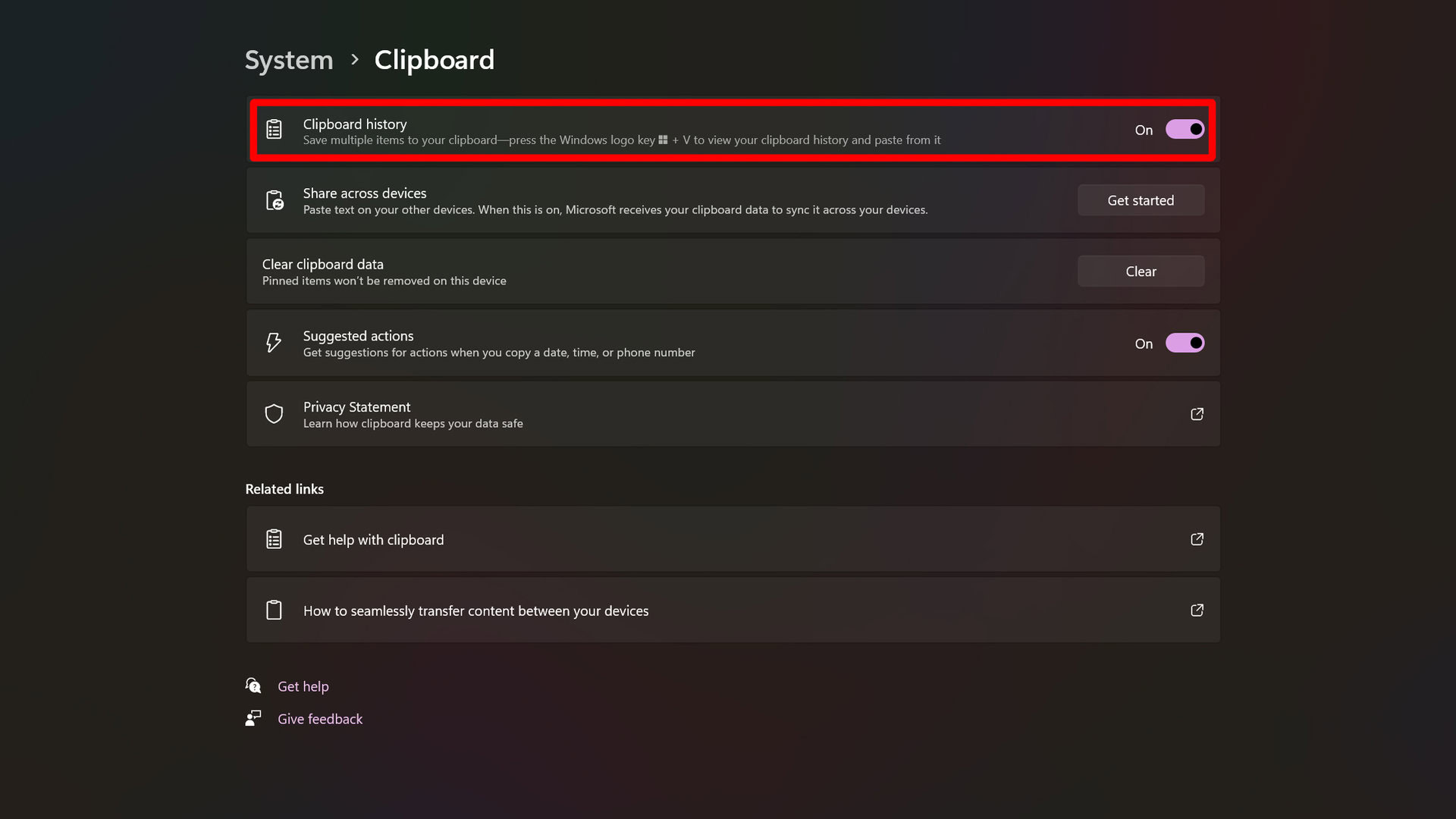
How to access and use the clipboard in Windows
Now that you have your clipboard history activated, viewing your clipboard and its history could not be easier. Just hold down the Windows key (the key with the Windows symbol that brings up your Start menu when you press it by itself) and hit the V key. A window will pop up with all your clipboard entries.
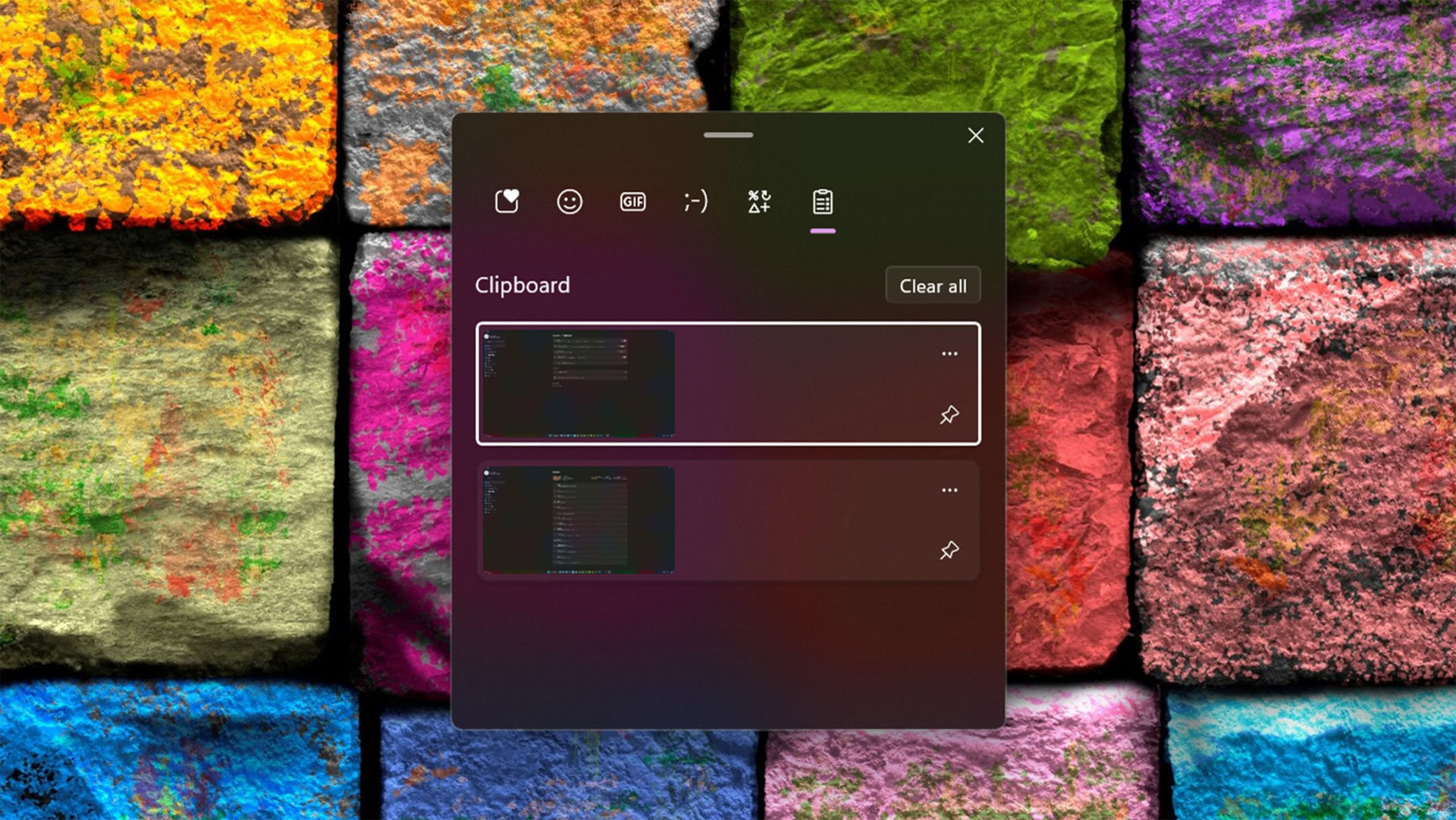
Note the icons at the top of the clipboard window. They give you access to some of the special features built into the utility. You can not only paste the contents of your clipboard, but emojis, GIFs, and symbols besides. Each of these submenus contains a search box to help you find what you need quickly.
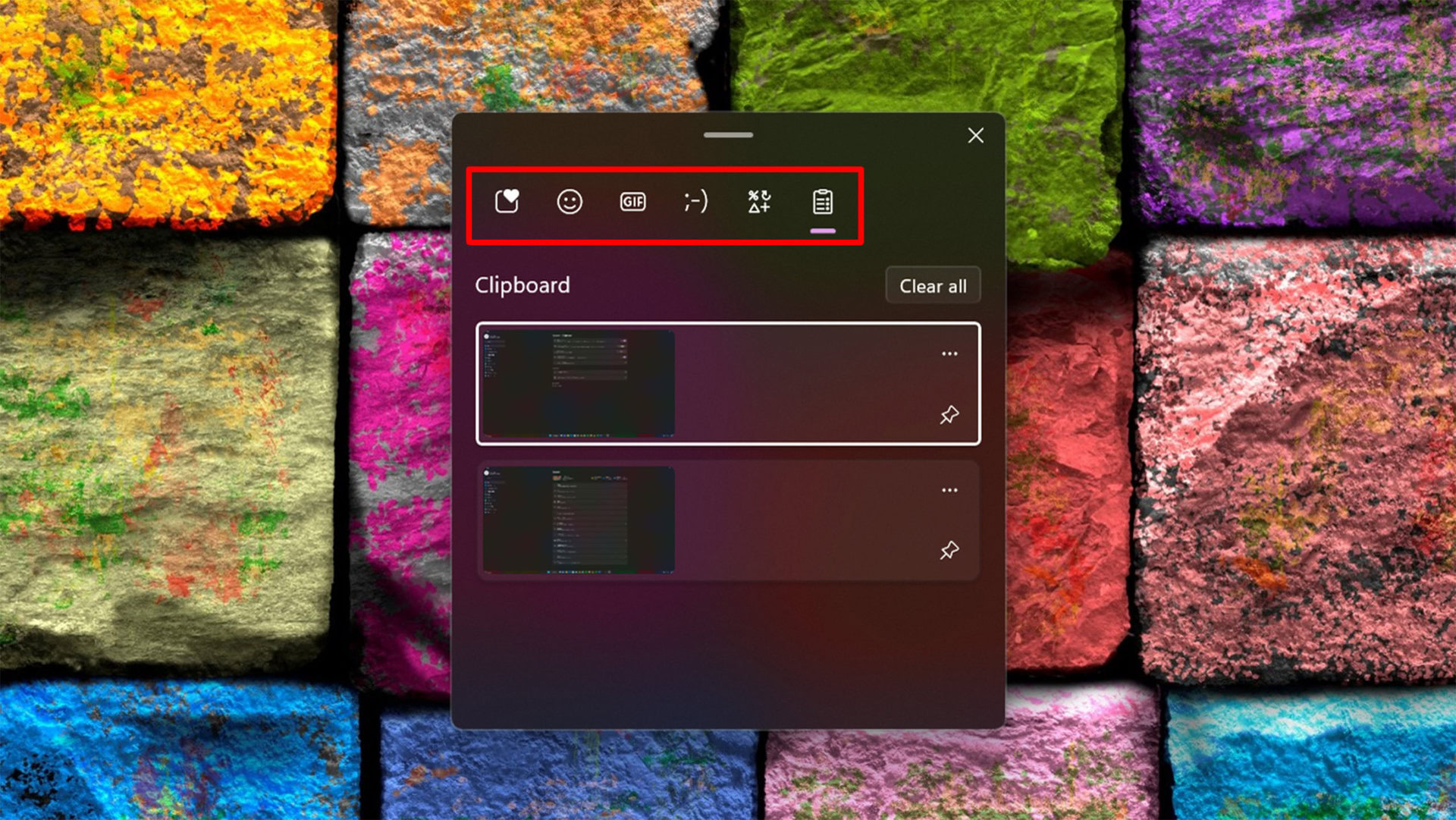
Next to each item on your clipboard you will see two icons: a three-dot menu icon and a pin icon. The three-dot menu will bring up the familiar garbage can icon that lets you delete one item from your clipboard (as opposed to the Clear all button, which empties your entire clipboard), in case it is something you do not want anyone else seeing. The pin icon does just what you would think it does: it pins the item to the clipboard so that, even if you exceed the maximum number of clipboard items, the pinned item will not be overwritten. This is a real time-saver if you have a text string or even an image that you need to paste on a regular basis. As you can see, the clipboard can do a lot more than it once could.
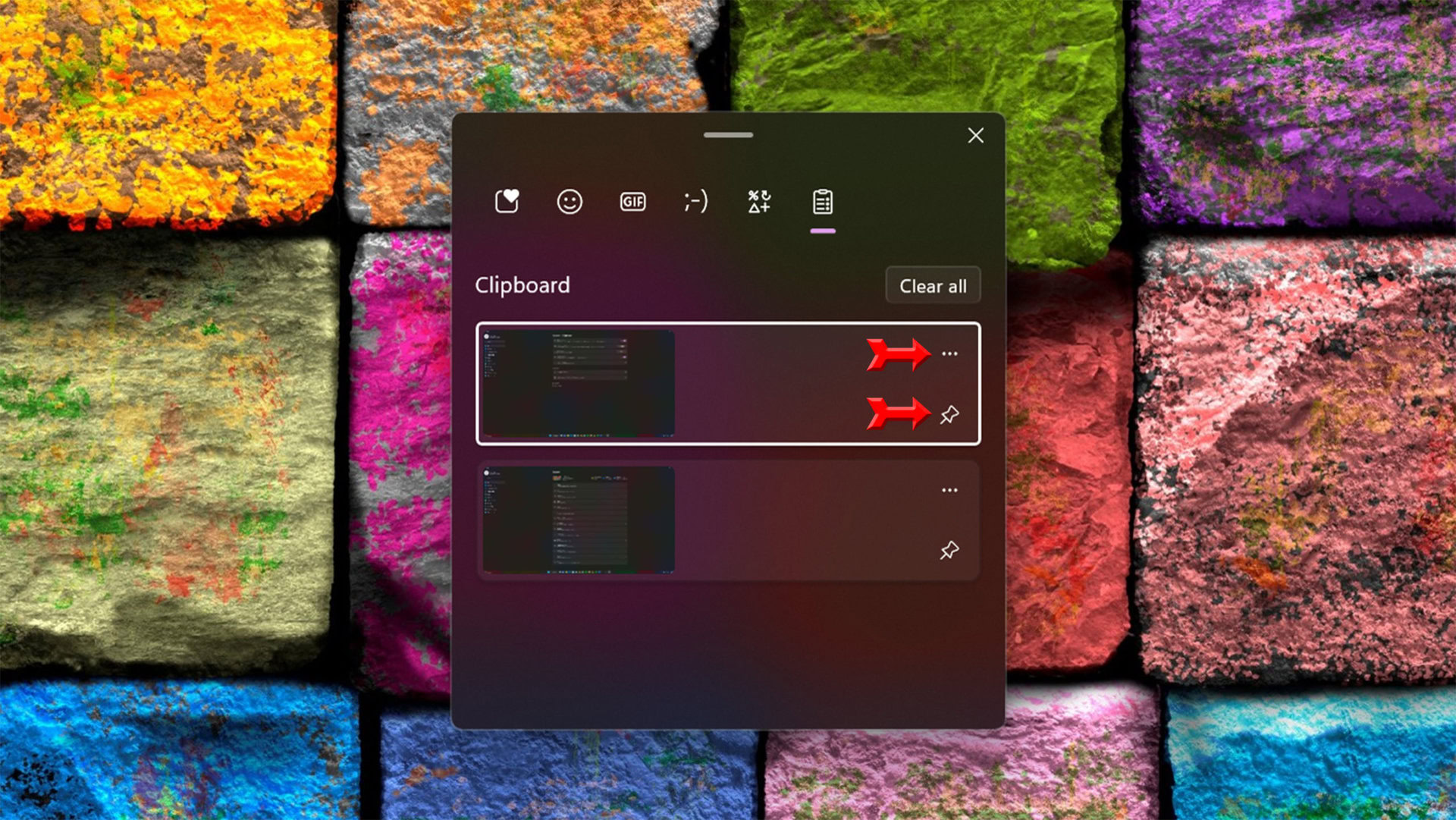
How to copy an image to the clipboard in Windows
The most common way to copy an image to your clipboard is to right-click on the image and select Copy image.
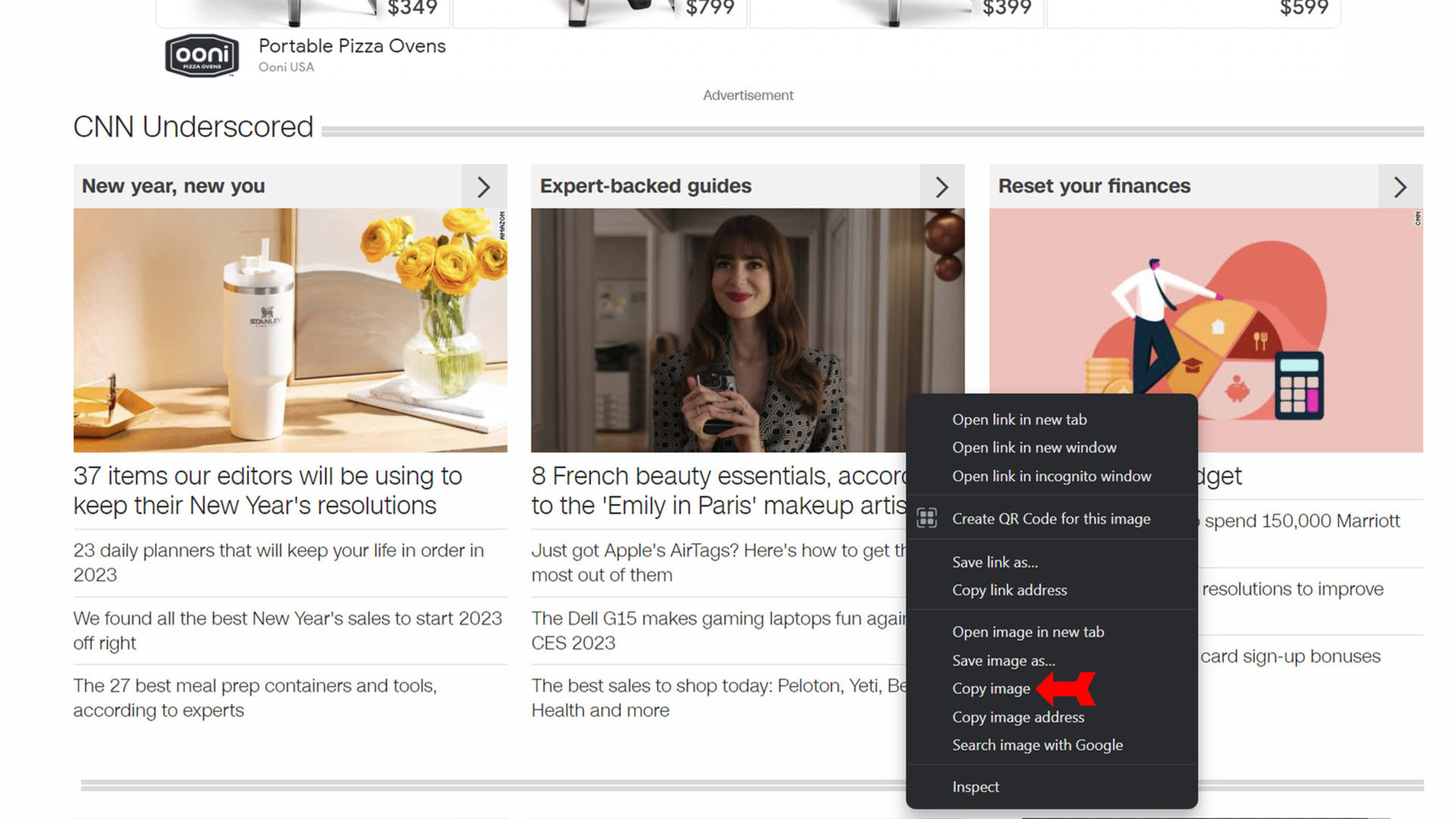
If the image is inside a document, you can also right-click on it and select Copy, or you can press ctrl + C. Keep in mind that if the image file is greater than 4MB, it will copy once, but it will not be stored in Clipboard History.
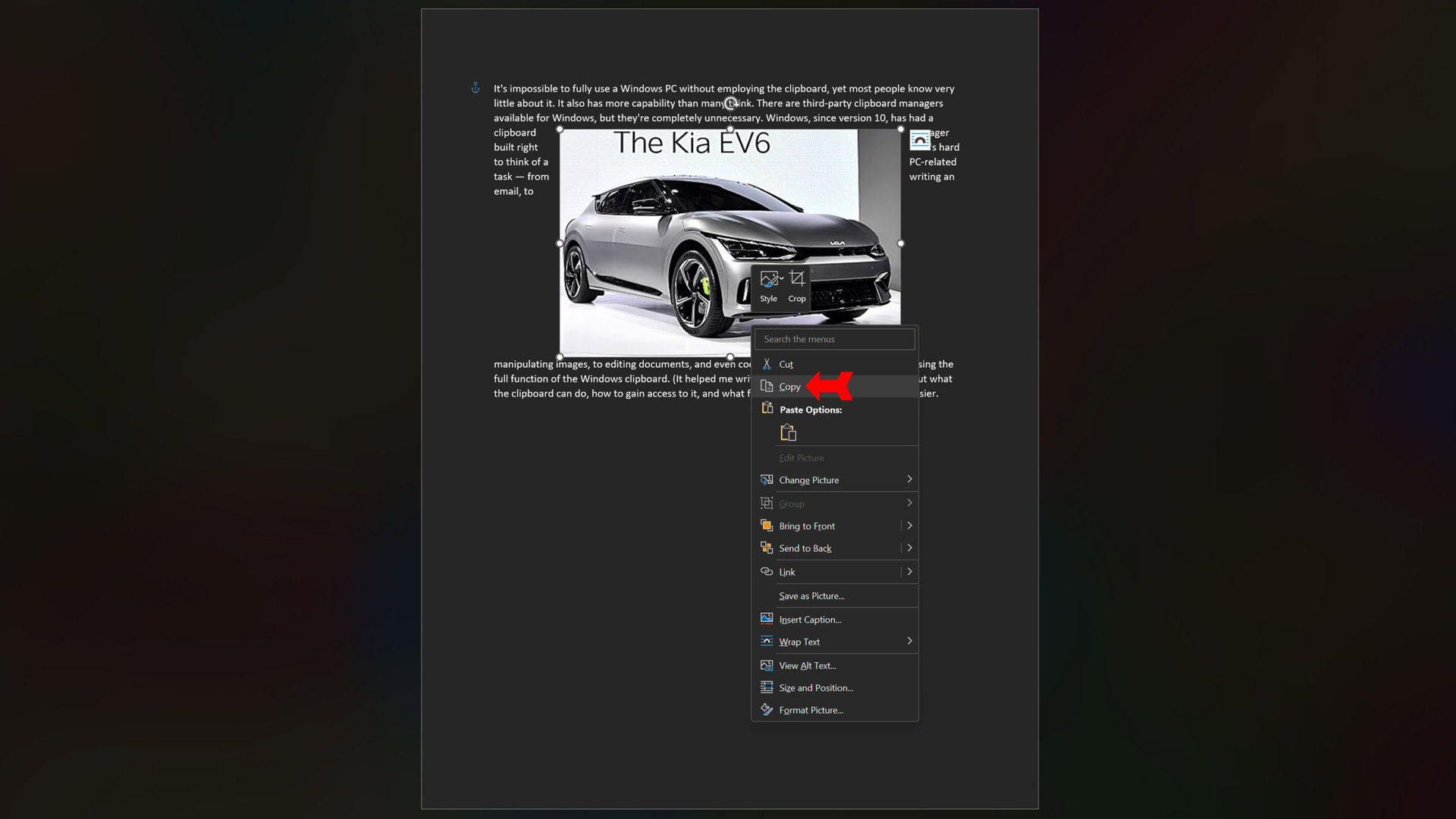
Where is clipboard data stored in Windows?
On a Windows PC, the data you copy onto the clipboard lives in the computer’s RAM. This is why you lose your clipboard data when you shut down or restart your PC — even the pinned items. There is no clipboard file you can copy to a drive and take with you. The only way to preserve the contents of your clipboard beyond the next time you reboot is to paste every item in your clipboard into a text file and save it.
Read more: How to take a screenshot on any computer
FAQs
No. The size of your clipboard is limited only by your computer’s RAM.
No, it is not, because it does not have a file location. Clipboard data lives on your system’s RAM, and users do not have access to individual memory locations in RAM.
The maximum number is 25. Pinning an item to the clipboard takes up one of these 25 slots. After the Clipboard History is full, newly cut or copied items will start to replace the existing items, starting with the oldest.
Yes. Images larger than 4MB in size will be copied, but not recorded to the Clipboard history.